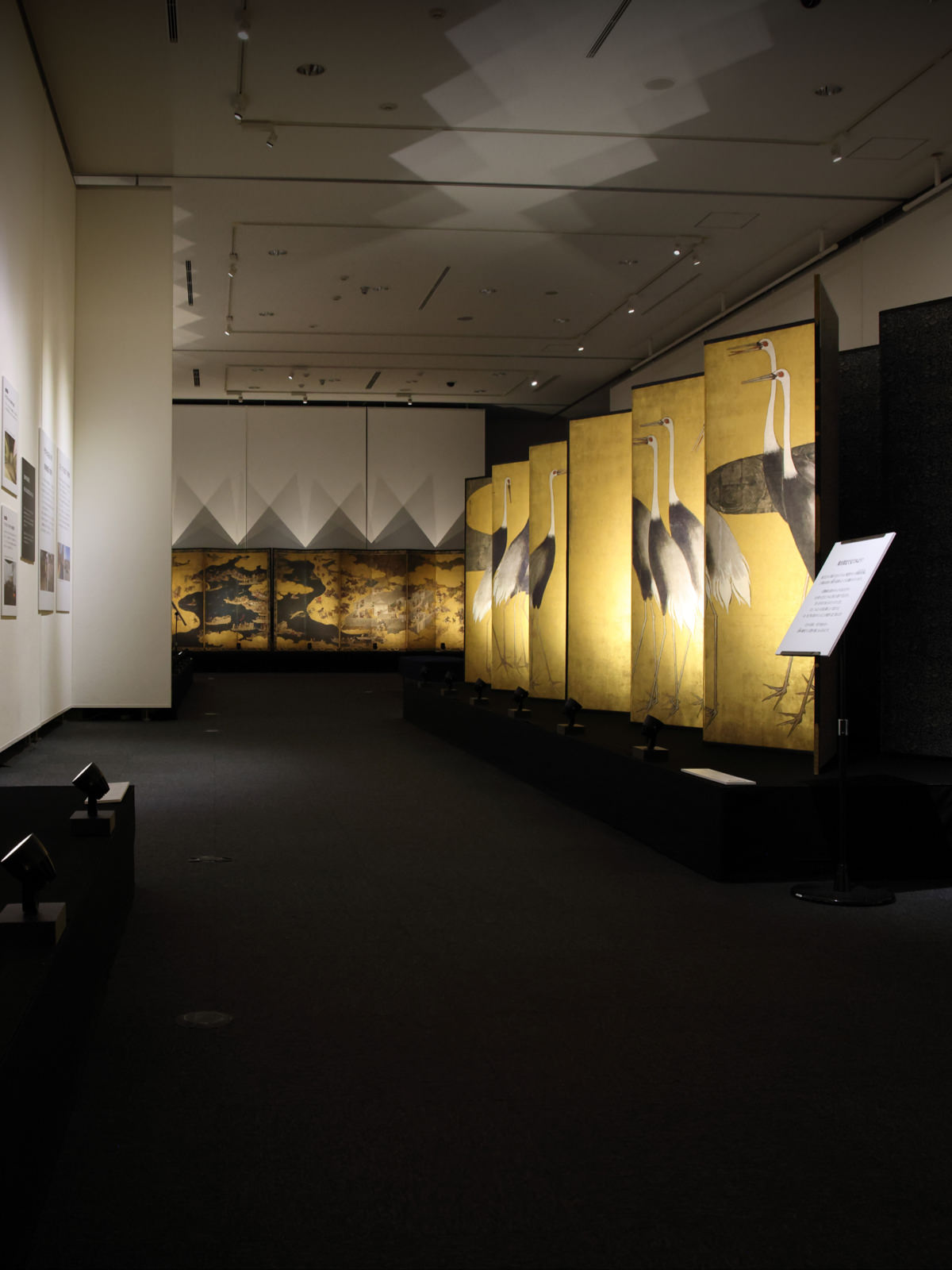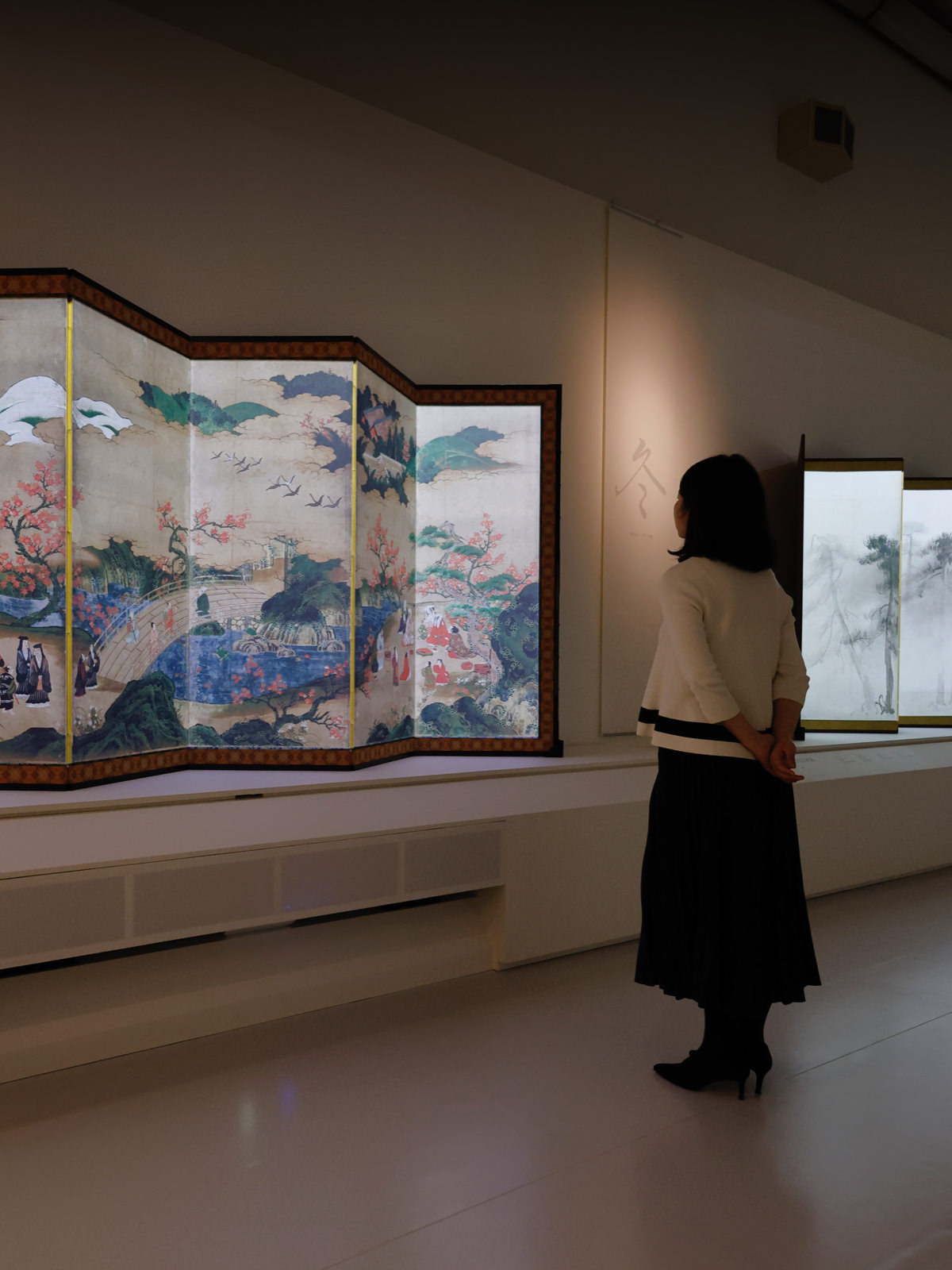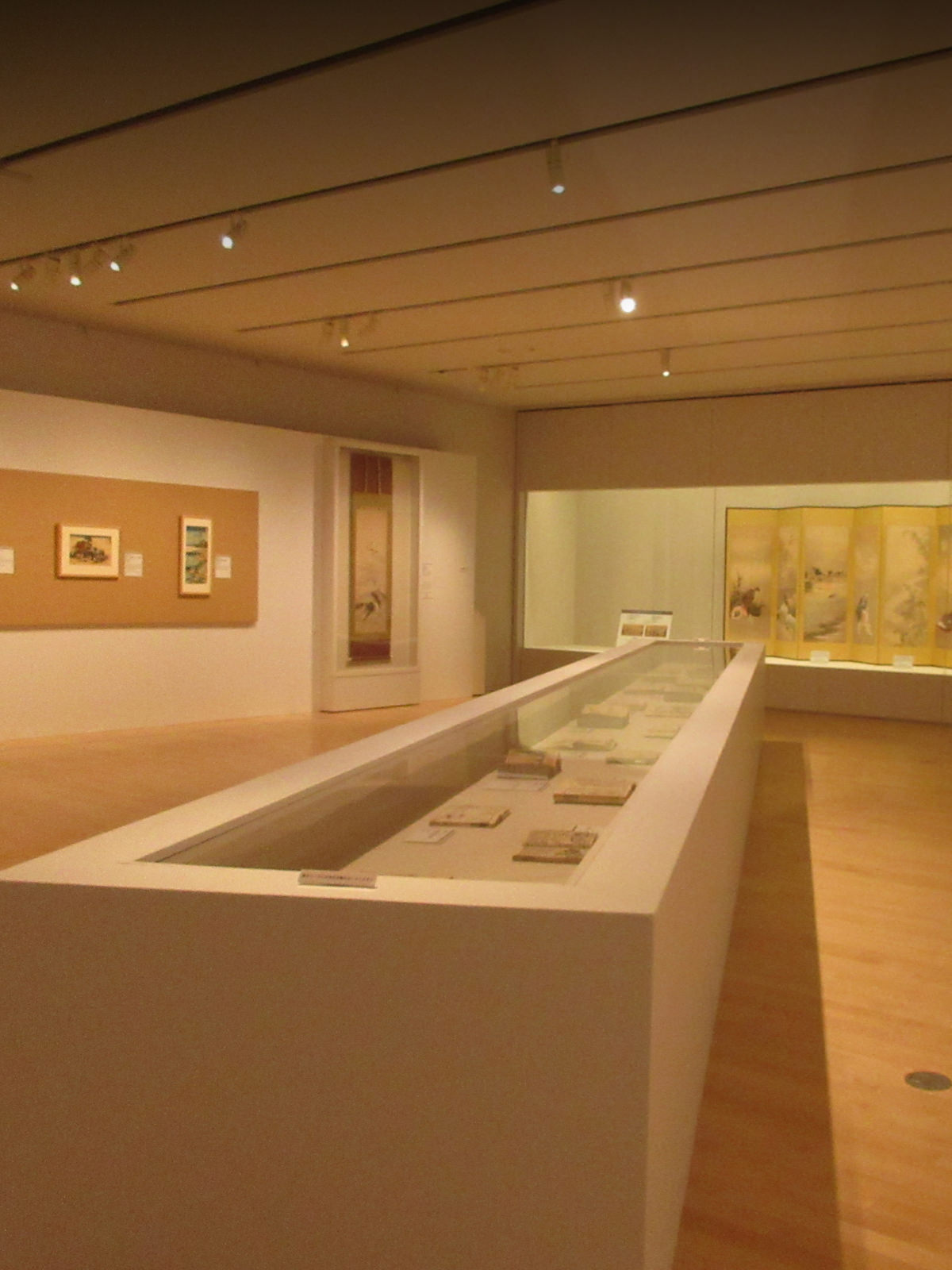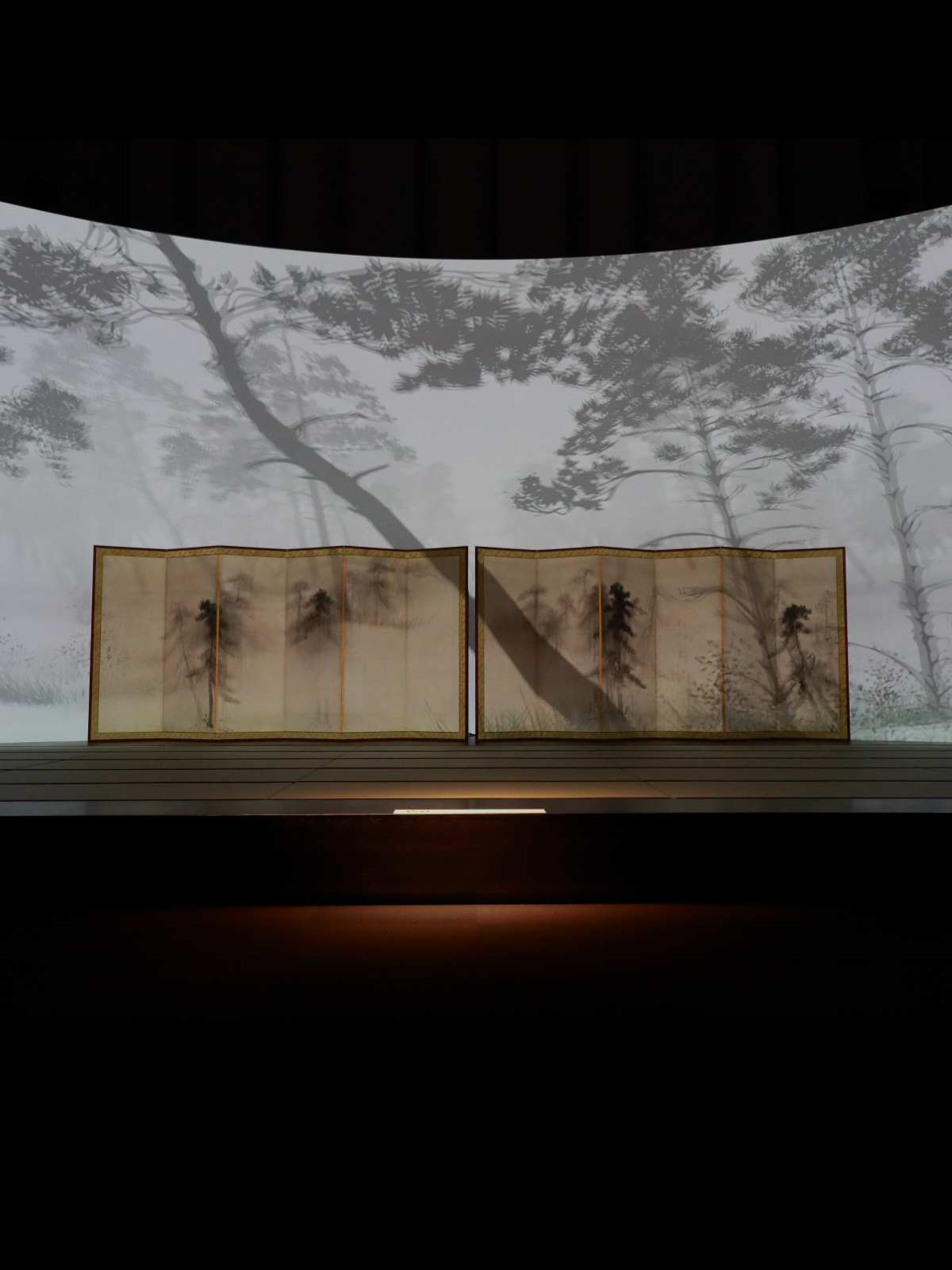
February 4, 2024
Masterpieces of Japanese art come together in Okayama as high resolution facsimiles!
A special exhibition “Must-See National Treasures and Masterpieces: A Miraculous Collection Realized by High-resolution Facsimiles” was held in Okayama City Museum from September 13 to October 20, 2024. This exhibition showcased 15 high-resolution facsimiles of domestic and international treasures and masterpieces painted by Japanese art masters, including Tawaraya Sotatsu, Ogata Korin, and Katsushika Hokusai.

The exhibition venue was divided into the first section “Japanese cultural assets that have traveled overseas” and the second section “national treasures and masterpieces in Japan.” Among the many works produced with Tsuzuri Project technology, the exhibition mainly showcased works that everyone has seen at least once in text books and works by masters of Japanese art. The exhibition offered an opportunity for visitors to experience and appreciate Japanese cultural assets in a close manner through displays without glass cases, which would be difficult with original works, as well as projection mapping that enabled people to experience the world of the artwork through music and video.


First section “Japanese cultural assets that have traveled overseas”
Two exhibits of “Waves at Matsushima” by Tawaraya Sotatsu and Ogata Korin were displayed immediately after entering the first section. The original work of Sotatsu’s “Waves at Matsushima” is owned by Smithsonian’s National Museum of Asian Art in the U.S., and is a masterpiece that would without doubt be regarded as a national treasure if it was in Japan. Korin’s “Waves at Matsushima” is owned by the Museum of Fine Arts, Boston. Korin respected Sotatsu and copied the work approximately 100 years after Sotatsu had painted his work. However, Korin incorporated his own interpretation of the work, rather than simply copying the original, expressing even more dynamic aspects, including movements of the waves. This space allowed visitors to compare and appreciate the works by Sotatsu, the father of the Rinpa School, and two masters who helped bring the Rinpa School to prominence.

The next key feature showed “Dragon and Clouds” by Soga Shohaku and “White Elephant and Black Bull” by Nagasawa Rosetsu facing each other. Shohaku and Rosetsu are known as “fantasy artists.” Although the motifs painted are different, the displays allowed visitors to thoroughly experience the works by two fantasy artists.


Right next to “Dragon and Clouds” by Shohaku were displayed “Dragon and Clouds” by Tawaraya Sotatsu and “Dragon and Clouds” by Katsushika Hokusai. Being the year of the dragon, many visitors were taking their time to enjoy the dragons by the three master painters from different angles.


Among the works in the first section, especially notable were those owned by Smithsonian’s National Museum of Asian Art. Since the originals are not allowed to leave the museum, they can only be appreciated on site. Six works including “Waves at Matsushima,” which we introduced at the beginning, were displayed in this exhibition. Visitors enjoyed the collection only this exhibition could offer, such as “Cranes” and “Country Scenes and Mount Fuji” that they would otherwise not be able to see in Japan.
Second section “National Treasures and Masterpieces in Japan”
The key features in the second section were “Chinese Lions” (Kano Eitoku (right screen) and Kano Tsunenobu (left screen)) painted by Kano Eitoku, who was a master painter representing the Azuchi–Momoyama period, and his great-grandchild Tsunenobu, and “Pine Forest” painted by Hasegawa Tohaku, arranged next to each other. Eitoku and Tohaku were rivals. The dynamic Chinese lions painted by Eitoku and the pine forest painted by Tohaku solely with different shades of ink are representative works of the two. While the motifs and images painted were different, each work fully demonstrated their skills, filling the space with overwhelming power.

The exhibition also displayed other works, including “Birds and Animals in the Flower Garden,” which is a representative work by Ito Jakuchu, and “Landscapes of the Four Seasons” by Sesshu, a painter with a deep connection to Okayama. With “The Wind and Thunder Gods” and “Pine Forest,” which are national treasures, visitors enjoyed the experience only projection mapped facsimiles could offer.

During the exhibition period, visitors were able to experience Japanese culture first-hand through the gallery discussion by Dr. Frank Feltens, a Japan Foundation Associate Curator of Japanese Art at Smithsonian’s National Museum of Asian Art, as well as the CPCP Outreach Program.
Visitors shared their joy, with comments such as, “I was able to enjoy a number of masterpieces that I would otherwise not be able to see all at once if they were the originals.” “The quality is so great that you can’t even tell them apart, yet we were able to enjoy them up close and take photos that we wouldn’t even dream of with the originals. It was amazing.” “The projection mapping was simply overwhelming.”
*In order to view videos, it is necessary to consent to the use of cookies by our website.
If the videos are not displayed, please click the “Cookie Settings” and accept cookies.
*Japanese subtitles only
Event information:
“Must-See National Treasures and Masterpieces: A Miraculous Collection Realized by High-resolution Facsimiles”
- Period:
- September 13 (Fri) to October 20 (Sun), 2024
- Venue:
- Okayama City Museum
- Organizers:
- Must-See National Treasures and Masterpieces Exhibition Executive Committee (Okayama City Museum and TV Setouchi )
- Co-organizer:
- Tsuzuri Project (Canon Inc. and Kyoto Culture Association (NPO))
- Special supporter:
- Ohmoto Gumi Co., Ltd.
- Support:
- National Center for the Promotion of Cultural Properties, National Institutes for Cultural Heritage








